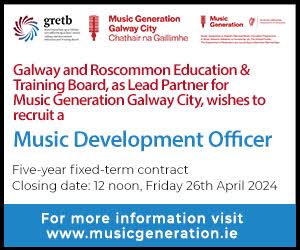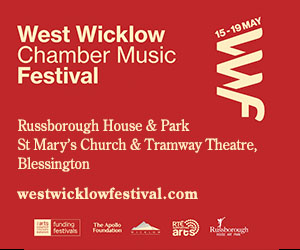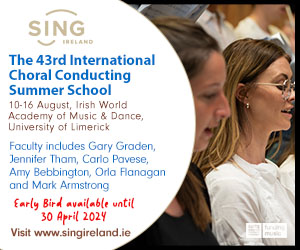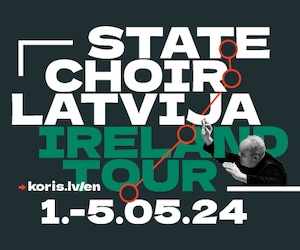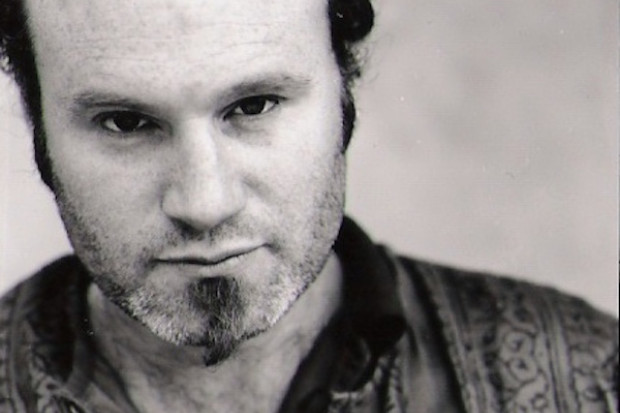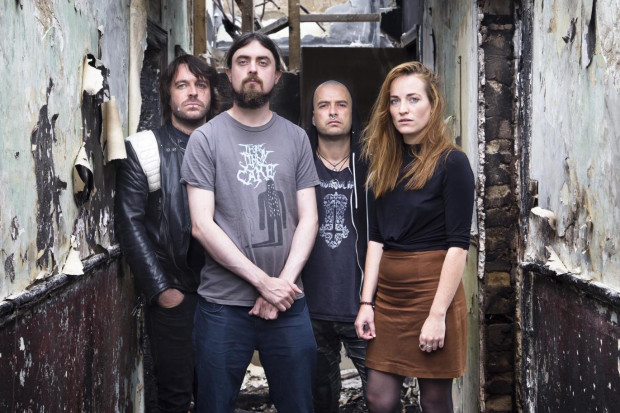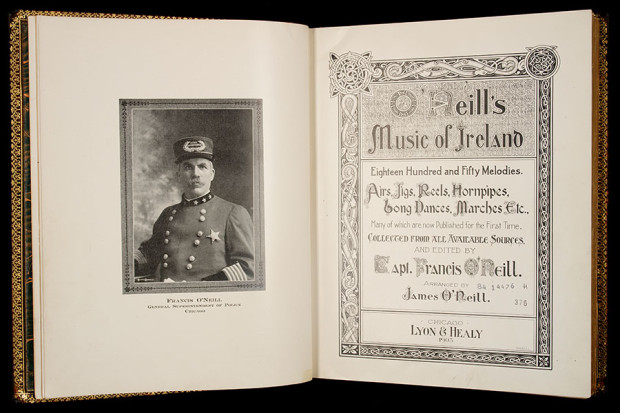Euro-Paddy Land
Up until the last decades of the 20th century the main issue that exercised the ‘Irish Diaspora’ – before then an unnamed disparate entity – was the question of political unity and independence in Ireland itself. There was a sense of a people with shared values having a wrong to redress. That wrong was distilled as the British colonial presence in Ireland. Whilst this issue remains, in recent times prominent Irish political figures have worked, intentionally or not, at inventing a wider concept of an Irish diaspora centred on the geographic and political entity that is the Republic of Ireland. Prior to the existence of an independent Irish state as such, this strategic locus was symbolically impossible and it is interesting that it has only been identified and exploited recently, in tandem as it were, with the confidence inducing effects of the economic boom. A sense of ‘diaspora’ can be turned up or down, on or off, or even around, depending upon socio-economic and political circumstance. There are no large scale Irish communities in Europe comparable to those that have long existed in North America, Britain or Australia for example, but, for the first time, there is a popular Irish diasporic presence in the cultural sphere. Through the influence of her writers and artists – individuals like James Joyce and Samuel Beckett, to mention but two 20th-century figures – Ireland has had a recent impact on European cultural life. This impact however has largely been confined to literary circles and although immensely important, it is not what I wish to speak of here. When I refer to an ‘Irish cultural diaspora in Europe’, I am talking about a widespread contemporary European awareness of popular Irish culture, and in this awareness folk-music features prominently. Against the important backdrop of membership of the EC and all of its attendant economic and political significance, the Irish cultural sphere of influence has extended to most parts of Europe: parts that hitherto were largely untouched by it. The medium of traditional and folk music has arguably been the most accessible grass-roots aspect of this growing sense of Ireland and its people. The success of the Irish soccer team has also been cited as having been of great significance in terms of Ireland’s international profile. The commercial success of some Irish pop and rock groups can also be included here.
Foreign interest in Irish music has in turn dramatically affected the popular perception of traditional music in Ireland itself. The public performance of traditional folk-music is now commonplace all over the country in both rural and urban contexts. Its aesthetic values may remain misunderstood by many, but it now has a universally recognised commodity value. Traditional music in Ireland has been linked with pubs since at least the 1950s and its potential as a promotional tool has long been recognised by the tourism and drinks industries. The seemingly permanent association of traditional music with drink and pubs, although convivial and of some limited economic benefit to musicians, has had the unfortunate side effect of devaluing the music as a genre. The experience of many musicians is that it is often little more than under-amplified background noise for the television watching public.
In Ireland itself and all over Europe, varieties of Irish music are used to promote Ireland and Irish produce. It is obviously viewed as an important aural icon that immediately identifies the provenance of the produce as Irish. The attendant implication is that it is clean and ‘Celtic’, cultured and wholesome, with a hint of humour and mystery. The instrument that typifies this at present is the uillean pipes (and to a lesser extent the low whistle). The ‘pipes’ have upstaged the harp as the archetypal Irish instrument. Retrospective justice one could say. The uillean pipes are popularly perceived as unambiguously Irish – pipers were reputedly hung during the Penal times – while the harp has been equally appropriated by both colonisers and colonised. The harp and the shamrock held a shared status as emblematic of Irish freedom throughout the 18th and 19th centuries. The harp was central to both the flag of the United Irishmen in the 1790s and that of the Fenian brotherhood in the late 1880s. The harp also featured below the crown as the official symbol of British rule in Ireland. This icon can still be seen on most of the older public buildings both north and south of the border.
Irish traditional and folk music in Europe
Irish traditional and folk musicians have been performing on the European continent since the late 1960s. At that time Germany was the major market place and groups like the Dubliners, the Furey brothers and Clannad were very popular. During the course of what could be called the German folk-reconstruction period in the mid-1970s, Irish and Scottish music became well established on the university and folk-club circuit there; referred to in English as ‘happy folk’. This expression was used in order to differentiate it from the more weighty Politiche Lieder (socio-political song) which was the preserve of many popular German folk-singers during this time. The notion of a Scottish murder ballad being in some way happy may be curious, but clearly the language barrier played a major part in this; as did the presentation of the music by the touring groups themselves as something de-politicised and light-hearted. According to traditional music promoter Carsten Linde, Irish music has remained popular in Germany despite a drop in interest in folk music in general during the mid-1980s. Many Germans are regular visitors to Ireland and have come to know and like the county. Irish music does not fall into the esoteric or ‘world music’ category there. It has a solid core following and, in this respect, it may be viewed as having a status akin to that of a more long-established genre like traditional jazz. Germany is still the main European destination for Irish bands, but audiences in every Western European country (and many in Eastern Europe) are becoming increasingly familiar with Irish folk music of some description. This is largely due to the increasing numbers of Irish pubs in all major European cities.
It is important to mention at this point that the Breton-Irish experience is particularly unique because it represents a conflict of diasporic perspectives. In Brittany the ‘Irish cultural diaspora’ has interfaced with a Breton Celticist diasporic construction that has been underway there since the late 1960s. This type of cultural dialogue is, in a truly popular sense, absent elsewhere. In addition Celticism may be perceived as another dimension of the ‘Irish diaspora’; the dimension that is aurally-iconicised in various types of ‘Irish/Celtic’ musical offerings of which there are many hugely commercially successful examples.
Music selling Ireland, Ireland selling music
As well as the many concert, festival and folk-club venues, the ‘Irish pub’ now provides the opportunity, if so desired, to experience some form of Irish music on a regular basis. These pubs started to proliferate during the late 1980s and are now ubiquitous practically everywhere in the world. They vary greatly in size and their quality as performance venues depends to a great extent on the owner or manager. In some of these custom built establishments the musician’s social function is little better than that of a human juke-box. For this reason many musicians regard them as the coal-face of performance situations. There are, however, a few notable exceptions where care is taken to balance making money with the creation of favourable performance conditions. These exceptions tend to be the places that are part-owned or licensed by musicians or music lovers. From Oslo to Shanghai (and in some cases Ireland itself), the ‘Irish theme pub’ represents a visible Irishness on a virtually world-wide scale. There are several Irish-based companies that travel all over the world fitting-up Irish pubs. In the more exotic locations, places like Hong Kong and Lhasa, the ‘Irish pub’ caters mainly for the ex-patriot British and Irish (and other Western European) communities. Many of these pubs, either run by the licensee or part of the outlet chain of a major brewery, provide their clientele with a diet of live ballads and/or Irish traditional instrumental music at least once a week. There is usually a constant recorded background hum of some form of Irish musical offering in these establishments en permanence. Back in March 1997, I overheard RTÉ’s Gerry Ryan interview a man looking for a ‘traditional piano accordion player and a fiddler’ to do a ‘six week stint’ in an Irish pub in Thailand. This type of offer is not at all unusual nowadays.
Euro-Paddies
Irish traditional and folk music now has – for better or worse – a strong association with pub culture everywhere. For many years now it has occupied the terrain of the Esperanto (or English) of Western European folk-music and the ideological powerhouse of ‘Celtic’ inspiration. In most parts of Europe – aside from being meeting points for locals with some nostalgia for Ireland and many Irish and British ex-patriots – Irish theme pubs can in some instances provide a source of income for players of Irish music. A number of traditional and folk-musicians from Ireland (and Britain) now live and work in Europe, but many of the resident players (in the case of Western Europe at least) are natives of that country. Such is the extent of their involvement with Irish people and Irish culture that they often speak recognisable regional forms of Hiberno-English. An Irish person, or a native English-speaker who says he/she is Irish, and who can sing or play (singing in particular) may be prized by European Irlandophiles for their perceived authenticity. However, many Irish traditional bands working on the European continent – playing at concerts, festivals and in pubs – are comprised entirely of European nationals. Aside from these local musicians, who tend to be reflective connoisseurs of the Irish tradition, there are of course rip-roaring Irish ballad groups (both Euro and Irish-based). These groups are often sponsored by drinks companies with the object of promoting their product. In the context of some of the larger custom built pubs, if the musical ‘Paddy’ is not a wild, constantly beer-swilling larger-than-life character, bewilderment or disappointment can be detected amongst some of the clientele. These type of pubs do not attract discreet music lovers – no more than similar establishments in Ireland – but they do represent a popular conception of Irishness abroad. St Patrick’s day is now celebrated throughout Europe.
Florian Fürst is a German promoter; he has been organising tours in Germany for well-known Irish traditional musicians since the early 1980s. He was responsible for bringing the legendary tin-whistle player and singer Micho Russell to Germany. He told me that he believes that the pub scene has had the effect of making Irish music banal to the German public. It is ever-increasingly perceived as music to drink to. He deliberately avoids the pub circuit when organising concert tours in order to (as he sees it) try to reverse this trend.
Single people in their twenties and thirties make up the majority of the patrons in ‘Euro-Irish’ pubs. The throng may include young Irish people who have never had any exposure to traditional music in their own home towns. Most are happy to join in the stamping, screaming and general bonhomie that can on occasion build up to a crescendo before closing time. A cathartic evening in some ‘Irish pubs’ can be quite a frenzied affair. I have been present at occasions in Brittany where the only recognisable unison phrase of the night – accompanied by symbolic eulogies about Celtic brotherhood – has been ‘dirty old town’ in the unmistakable style of the Pogues. This song has become popularly associated with Ireland. In fact, it is a poignant ballad about the legacy of environmental misery created by industrialisation in 19th century Britain. For considerable numbers of people on the European continent, Ireland equals a good laid back holiday and the Irish are people who know how to enjoy themselves. They may currently be seen by other Europeans as more easy-going than themselves, but importantly, they are perceived as fellow-Europeans. An evening of Irish music and song with its emphasis on conviviality, therefore, has an element of culturally accessible Euro-Mardi Gras. It is different, but it does not feel excessively foreign. Virtually everywhere that I have travelled in Western Europe in recent times I have encountered nothing but goodwill towards the Irish and Ireland. A comparatively recent development, Irish music on the European continent is a diasporic music in an environment that has no history of large-scale Irish emigration. This is what makes it different, at least in terms of its social context, to much of the Irish music played in other parts of the English-speaking world.
Published on 1 July 2002
Desi Wilkinson is a musician and post-doctoral research-associate at UL. He is a recipient of an award from the IRCHSS (Irish Research Council for the Humanities and Social Sciences).






